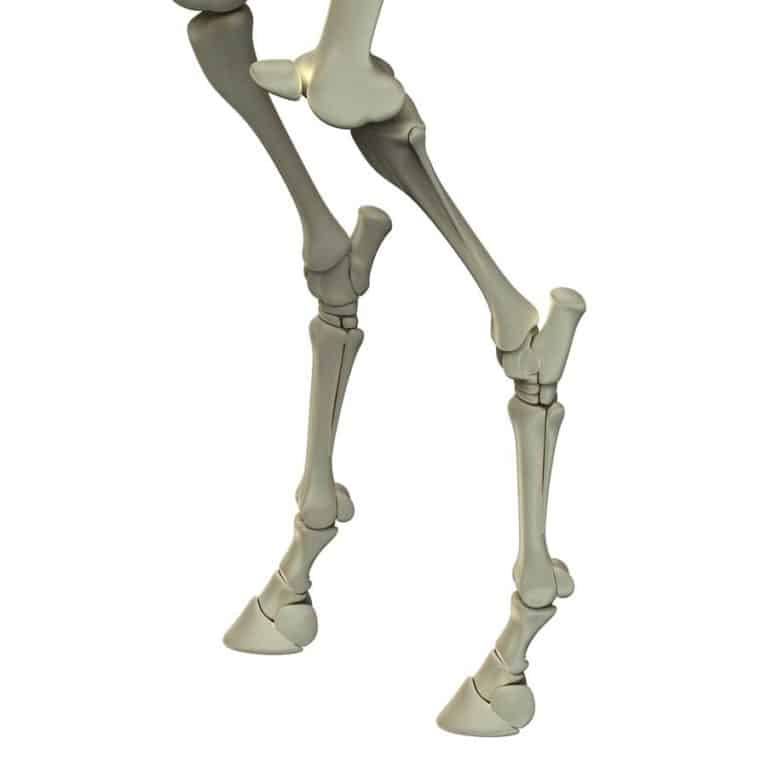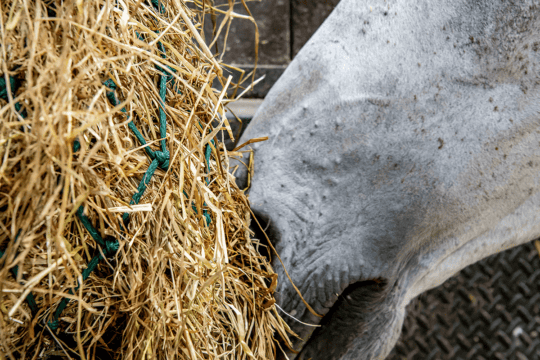There is a long history of fascination with the horse’s athletic ability, which is used in both sport and leisure. Physiologically, horses are supreme athletes and much more naturally talented than humans. But this athleticism means that they are prone to musculoskeletal problems, especially in their joints, and domestication and breeding for specific traits has probably enhanced the likelihood of problems.

Joint problems include injuries such as sprains and developmental orthopaedic diseases (DOD) in young horses, but the most common cause of joint lameness is osteoarthritis (OA), and one veterinary survey showed that 60% of lame horses had OA.
What goes wrong?
Joints – also called articulations, hence the term arthritis – are where bone ends meet and are joined together by a fibrous joint capsule and connective tissue. The ends are covered in smooth cartilage to enable them to glide smoothly, allowing movement. If damage occurs, the resulting inflammation causes damage to the cartilage, which, due to its limited repair capabilities, can become thinner and roughened. Eventually, the underlying bone is also affected, at which stage the condition is described as OA. Inflamed bone produces more bone in an attempt to heal, so bony spurs and overgrowth can result.
Joint problems include:
- Injuries including sprains (ligament damage)
- DOD, including OCD and bone cysts
- Arthritis (joint inflammation)
- OA
A variety of factors increase the risk of OA, including a genetic predisposition, poor nutrition (such as an unbalanced diet during growth), obesity, excessive work, injury, inappropriate surfaces, and old age.
Classic signs of OA are pain and stiffness, although early stages can occur without overt symptoms. Over time range of motion is reduced and there may be swelling.

How to prevent and manage
There are certain strategies that can reduce the risk. Starting early is the key to reducing the risk of joint problems:
- Select breeding stock carefully to minimise genetic susceptibility
- Feed a balanced diet to growing youngstock, taking extra care with energy and protein balance, mineral intake, starch intake and ensuring slow gradual growth
- Use a progressive and carefully planned exercise regime, never working the horse harder than its current state of fitness
- Intervene as early as possible with injury
- Feed a balanced diet with particular emphasis on mineral balance and a healthy bodyweight
- Feed an oral joint supplement (choose wisely because not all contain effective levels of ingredients)
Supplementation
Oral joint supplements are commonly used to support joint health and they are the most popular type of supplements for horses. Beneficial joint supplement ingredients may include nutraceuticals like glucosamine and chondroitin, MSM, Omega 3s such as DHA and EPA and antioxidant Vitamin C. Their main benefit over some types of medication is the lack of harmful long-term side effects.
Joint supplement ingredients have a variety of effects, including providing building blocks for joint tissue and antioxidants to reduce damage. Some seem to block inflammatory mediators, limiting damage, too. For example, glucosamine seems to increase new cartilage production and limit the breakdown of existing cartilage in horses.
Evaluating Joint Supplements
When choosing a suitable ‘joint support’ product you may opt for simple but effective glucosamine, or for a more comprehensive combination of ingredients. Whatever your choice, you need to be mindful that these supplements do not always provide the answer and relative success is likely to depend on why you are feeding the supplement in the first place.
Diagnosis by your veterinarian is essential before embarking on nutritional support for an injury or disease situation. Additionally, whatever the main active ingredient in your supplement of choice, you should be aware of the level of the active ingredient present per daily feed. This will enable you to make valid comparisons between competitive products and to evaluate their relative ‘value for money’.
*Ad promotion*
Science Supplements have conducted extensive research into the effect of supplement ingredients on horse’s joints and this has led them to formulate FlexAbility Plus+. FlexAbility Plus+ is one of the highest specification joint supplements available in the UK and the only joint supplement on the market with two clinical and scientific studies demonstrating the positive effects of joint supplementation. FlexAbility is the only joint supplement in the UK with a published, peer-reviewed paper in The Journal of Equine Veterinary Science. The study is the largest undertaken in recent history and the findings were also accepted and presented at the British Equine Veterinary Association Congress. The clinical trials suggest for stiff horses, 6–7 out of 10 fed FlexAbility Plus+ benefit in maintaining normal joint function and mobility.FlexAbility Plus+
- One of the most comprehensive joint supplements available in the UK
- The only joint supplement in the UK with a published, peer-reviewed paper in The Journal of Equine Veterinary Science
- Unique combination and optimum levels of scientifically proven ingredients
- Glucosamine HCl, Chondroitin Sulphate, MSM, Hyaluronic Acid (HA), DHA, EPA, Vitamin C
- For all horses, young and old, with results seen in as little as 14 days
- 1.9kg tub gives approximately five weeks’ supply
For more information on joint supplements, visit sciencesupplements.co.uk















